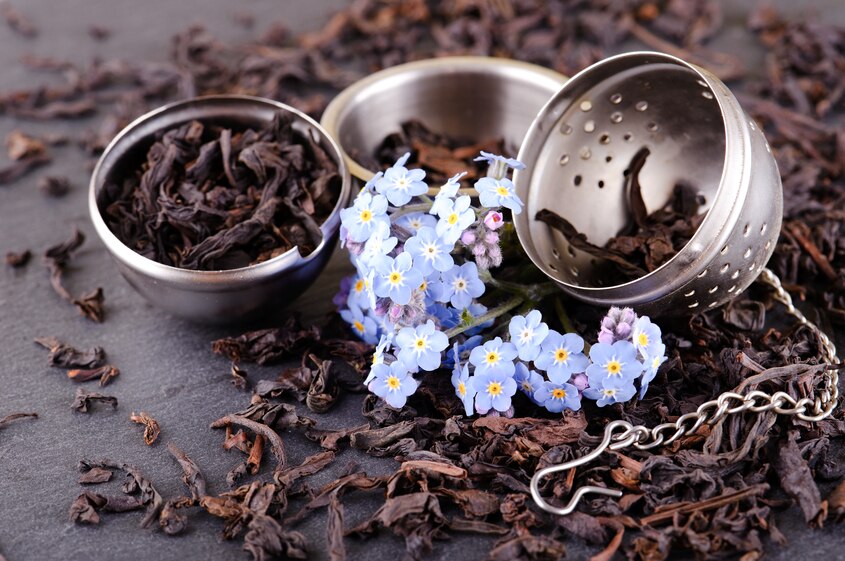More goes into preparing the perfect cup of tea than meets the eye. Yes, you have to choose the best blend, heat the water to the proper temperature and let it steep for the recommended timeframe. But you also have to care properly for your accessories, from teacup to teapot.
Want to help ensure a perfect tea time every time? Following are some quick tips for cleaning, storing and caring for some of the popular accessories that make your morning, afternoon and/or evening cup of tea an eagerly anticipated ritual.
Caring for a porcelain tea set
Here are some helpful hints for caring for porcelain cups and saucers:
- Always handle with care
- Place a mat or dish towel in the sink prior to cleaning to help prevent accidental chipping
- Hand wash each piece individually using mild dishwashing liquid
- Avoid detergents that contain citrus, as the harsh acid can damage fragile porcelain
- After rinsing, allow pieces to thoroughly dry on plastic-coated drying rack or soft dish mat
- Store porcelain in a cabinet to help ward off dust and preserve the easily breakable pieces
- Dust regularly—one piece at a time—using a soft, microfiber cloth
- Refrain from holding cups by handle while dusting
Caring for a silver tea set
Here are some basic rules for caring for a silver-plated or silver tea set:
- Keep silver tea set away from aluminum, stainless-steel and other potentially damaging metals
- Rinse tea set with water after every use or if it silver comes in contact with citrus fruits, vinegar or other potentially corrosive elements
- After rinsing, hand dry pieces immediately with a soft cloth to avoid spotting
- Polish tea set once a year, at minimum, or more often with regular use
- Polish tea set if you notice tarnish forming
- Wear a pair of cotton gloves while polishing tea set to avoid fingerprints
- Use a cotton swab dipped in silver polish to target hard-to-reach areas
- Store your silver tea set where it won’t be exposed to air or excess heat (e.g., airtight container, drawer or chest)
- Polish and wrap pieces in acid-free tissue paper, cotton or felt to ward off corrosion and tarnish
Caring for a Kettle
We’ve already touched on porcelain and silver, but tea kettles may also be made of ceramic, stainless steel and cast iron, among other materials. Many types of kettles can be washed with mild dish soap, water and a soft cloth, but cast iron kettles require additional care and caution:
- To avoid damaging the enamel lining, only use for brewing (not in place of a stove-top kettle)
- Never put a cast iron kettle the microwave or dishwasher
- Avoid exposure to salt or oil
- Avoid harsh detergents, rinse with water only
- Do not scrub with abrasive pads
- Hand dry with a soft, dry cloth after each use
- Do not leave water or tea inside kettle for extended time periods
- Always wipe down the exterior while kettle is still warm
Caring for a Tea Infuser/Ball
Many tea infusers and balls are dishwasher safe. Others can be easily cleaned with alcohol or baking soda and then rinsed with water. Follow the care instructions on the product packaging for best results. Store your infuser in a kitchen drawer or cabinet.
Caring for a Tea Tumbler
Like infusers, many tea tumblers can be cleaned in the dishwasher. Other cleaning methods include handwashing with mild dish soap or a combination of baking soda, vinegar (1 tablespoon each) and water. For best results, follow the care instructions on the product packaging. Tumblers can be stored in a kitchen cabinet.

